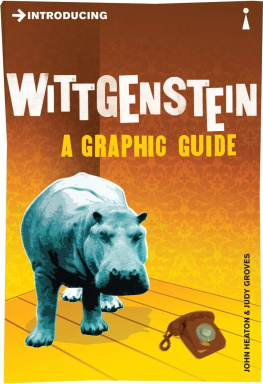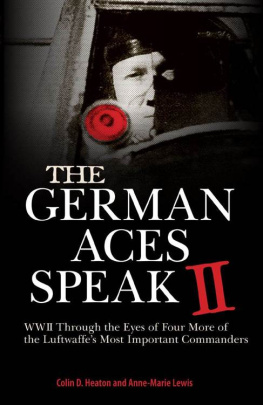Cover art
[Frontispiece: Sogne Fjord, Gudvangen (missing from book)]
THE
NORWEGIAN FJORDS
PAINTED AND DESCRIBED
BY
A. HEATON COOPER
ARTIST OF "THE ENGLISH LAKES"
WITH
TWENTY-FOUR FULL-PAGE ILLUSTRATIONS
IN COLOUR
LONDON
ADAM AND CHARLES BLACK
1907
Published September, 1907
Black's Smaller Series
of Beautiful Books
THE NORWEGIAN FJORDS
BY THE SAME ARTIST
THE ENGLISH LAKES
PAINTED BY
A. HEATON COOPER
DESCRIBED BY
W. T. PALMER
CONTAINING 75 FULL-PAGE ILLUSTRATIONS
IN COLOR
PRICE 20s. NET
"Every lover of the Lake District will do
well to secure a copy of this beautiful
book."The Guardian.
"This very handsome and acceptable
volume."The World.
"The book is one to pore over at leisure, and
to enjoy either when on a holiday or after
returning from one."Yorkshire Post.
"This beautiful book is a triumph of local
literature and art which will be a treasure to
all in whose way it comes."Whitehaven News.
Published by
A. & C. BLACK . SOHO SQUARE. LONDON . W.
AGENTS
AMERICA.. THE MACMILLAN COMPANY
64 & 66 FIFTH AVENUE, NEW YORK
CANADA .. THE MACMILLAN COMPANY OF CANADA, LTD.
27 RICHMOND STREET WEST, TORONTO
INDIA .. MACMILLAN & COMPANY, LTD.
MACMILLAN BUILDING, BOMBAY
309 BOW BAZAAR STREET, CALCUTTA
NOTE
The fjords of Norway, by their unique charm, annually attract an increasing number of English and American tourists.
This volume, the artist hopes, may be found useful to the traveller who desires a more intimate acquaintance with the country and its people than may be acquired from a casual visit to its shores.
It is the outcome of periodical visits to Norway extending over the last fifteen years, including two winters spent among the fjords and mountains of that delightful and interesting country.
In claiming for this volume no literary merit whatever, the artist trusts that the reader, whilst accepting it as perhaps a feeble statement of bare facts, will find compensation for any lack in this respect by appreciating his efforts in the illustrations. A.H.C.
CONISTON, R.S.O.,
LANCASHIRE.
CONTENTS
BergenThe Hardanger FjordA peasant's homestead, and home industryHorticultureLand tenureBoat-building from ancient timesThe staple food of the peasants"The Gothenburg system"
The Hardanger Fjord (continued)Means of communicationA drive by "kariol" from Vossevangen to UlvikUllensvang, the fruit-garden of HardangerThe ancient and national arts of wood-carving, tapestry weaving, and embroideryThe Hardanger violinWaterfallsGlaciersFjord formation
The "Eddas" and "Sagas"Heathen mythologyA pagan templeAn ancient "Stav-kirke" at VikFolklore and superstition"Balder's Baal," or midsummer's eve fires, of pagan originWedding customs
The Sogne FjordBalholm and the "Frithjof's Saga"Life at a "ster" or mountain out-farmA bear-hunter's taleSea-fight between King Sverre and Magnus Erlingssn, A.D. 1184An ancient farmstead in NrfjordA wedding at GudvangenThe Nrdal
The Sogne Fjord (continued)Forestry
The mining industryLrdal and the Borgund churchThe VettisfosLyster Fjord and JtunheimenThe Norwegian Tourist ClubJstedalsbr, the most extensive ice-field in EuropeUrns "Stav-kirke," the oldest church in Norway
The Nord FjordThe approach from the sea-coastTypical fjord sceneryThree beautiful lakes: Loen, Stryn, and OldenGlaciers and avalanchesA drive from Falejde to ieThe magnificent gorge of Nordangsdal
Thee Norwegian Established Church ("den Norske Stats-Kirke")The ReformationThe Lutheran creedsThe Bishops and clergyThe dioceses, deaneries, and livingsChurch missionsFree education obtains in NorwaySchools and collegesThe University
The Hjrund Fjordie to HellesyltAn evening idyllThe Geiranger Fjord and its waterfallsAn ancient farm near MeraakBy steamer to NsThe grandeur of the RomsdalThe River RaumaSalmon fishingThe great sea fisheriesThe midnight sunWinter sports in NorwayWild animals and gameMolde, the most beautifully situated town in Norway
LIST OF ILLUSTRATIONS
(missing from book)...... Frontispiece
(missing from book)
THE NORWEGIAN FJORDS
CHAPTER I
THE HARDANGER FJORD
To approach the Norwegian coast at sunrise is an exceedingly enjoyable experience. Myriads of rock-islands in the sea and cloud-islands in the sky, their perspective terminating on the distant horizon in a peaked range of inland mountains, themselves like a cloud floating in golden vapour of dawn.
As the rising sun burns its path upwards, the sparkling sea reflects the glory of the sky in countless hues, and the magic of morning is felt in the air, cool and clear as crystal, as the steamer slows to await the pilot and the sea-birds wheel around.
Threading this intricate maze of islands, indications of human habitation soon become evident perched on grassy headlands or nestling in rocky creeks, and soon we are at the busy wharf of the first port of call, Stavanger, a bustling and clean little town, whose eleventh-century cathedral stands in dignified contrast to the brightly-painted wooden buildings at its feet.
Bergen
The navigation of the coast here is exceedingly intricaterocky islands and skerries innumerable, and narrow winding channels; lighthouses, which are seen at every turn, and on both sides of the steamer's course, indicate the dangers and test the skill of the pilot and captain as the steamer proceeds in a north-westerly direction to Bergen, the metropolis of Western Norway.
Founded by King Olaf Kyrre in 1070, Bergen has witnessed most of the stirring events of the nation's life.
The population of the town is now 72,000. During the fourteenth and fifteenth centuries the Hanseatic League, which then monopolized the commerce of Northern Europe, held absolute sway here in Bergen, and the quaint Tydskebryggen (German quay) was their trading quarters. Near by the fortified tower of Rosenkranz was built to hold the Hanseatic quarter in check. It adjoins Haakonshal, the ancient palace of King Haakon Haakonson, who died in 1263.
This is the most ancient part of the town, although it is at present undergoing a change. Tydskebryggen is being modernized; its old-world character is fast disappearing.
Close by is St. Maria Kirken, a quaint twelfth-century church, formerly in possession of the Hanseatic League.
Triangelen (the fish-market quay) is interesting on Wednesday and Saturday mornings, where a fleet of small fishing-boats is moored alongside, lively and witty bargaining going on between buyer and seller which is highly amusing to witness. Bergen is in many respects a most interesting town, the ancient rubbing shoulders with the modernthe electric tram-car with the carrier's cart and "kariol"; the slender wood-framed, sack-covered booth with the gaily-painted kiosk; and the latest fashions from London and Paris with the divers picturesque costumes of fisherfolk and farmer, "striler" and "bnder." Handsome stone-built shops stand cheek by jowl with the low red-tiled wooden ones, no two alike, in every variety of size and colour, relieving the monotony of the narrow and crooked streets.













